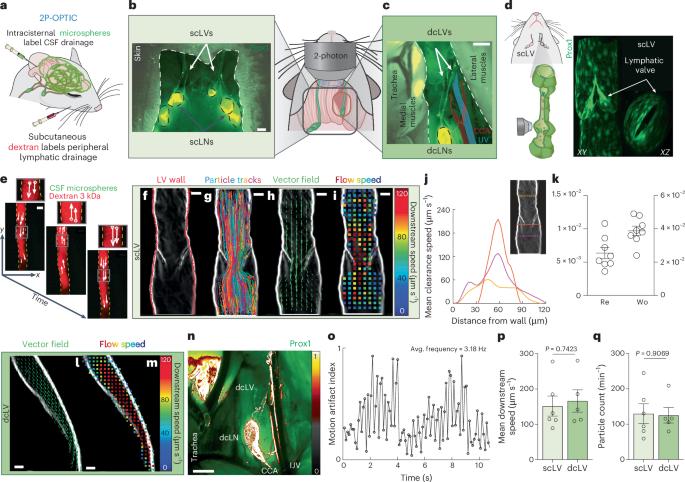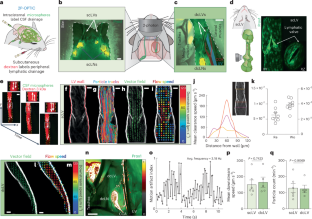Restoration of cervical lymphatic vessel function in aging rescues cerebrospinal fluid drainage
IF 17
Q1 CELL BIOLOGY
引用次数: 0
Abstract
Cervical lymphatic vessels (cLVs) have been shown to drain solutes and cerebrospinal fluid (CSF) from the brain. However, their hydrodynamical properties have never been evaluated in vivo. Here, we developed two-photon optical imaging with particle tracking in vivo of CSF tracers (2P-OPTIC) in superficial and deep cLVs of mice, characterizing their flow and showing that the major driver is intrinsic pumping by contraction of the lymphatic vessel wall. Moreover, contraction frequency and flow velocity were reduced in aged mice, which coincided with a reduction in smooth muscle actin expression. Slowed flow in aged mice was rescued using topical application of prostaglandin F2α, a prostanoid that increases smooth muscle contractility, which restored lymphatic function in aged mice and enhanced central nervous system clearance. We show that cLVs are important regulators of CSF drainage and that restoring their function is an effective therapy for improving clearance in aging. Cervical lymphatics drain cerebrospinal fluid and clear metabolic waste from the brain. Du et al. show using 2P-OPTIC that these are disrupted in aging due to reduced pumping. Restoring cervical lymphatic function with prostaglandin F2α rescues brain clearance.


在衰老过程中恢复颈部淋巴管功能可挽救脑脊液引流。
研究表明,颈淋巴管(cLV)能从大脑中排出溶质和脑脊液(CSF)。然而,它们的流体力学特性从未在体内进行过评估。在这里,我们对小鼠浅层和深层 cLV 中的 CSF 示踪剂进行了活体粒子跟踪双光子光学成像(2P-OPTIC),描述了它们的流动特性,并显示主要驱动力是淋巴管壁收缩产生的内在泵送。此外,老龄小鼠的收缩频率和流速降低,这与平滑肌肌动蛋白表达的减少相吻合。通过局部应用前列腺素 F2α(一种能增加平滑肌收缩力的类前列腺素),衰老小鼠的流速减慢得以缓解,从而恢复了衰老小鼠的淋巴功能,并增强了中枢神经系统的清除能力。我们的研究表明,cLVs 是 CSF 引流的重要调节因子,恢复它们的功能是改善衰老小鼠清除能力的有效疗法。
本文章由计算机程序翻译,如有差异,请以英文原文为准。
求助全文
约1分钟内获得全文
求助全文

 求助内容:
求助内容: 应助结果提醒方式:
应助结果提醒方式:


